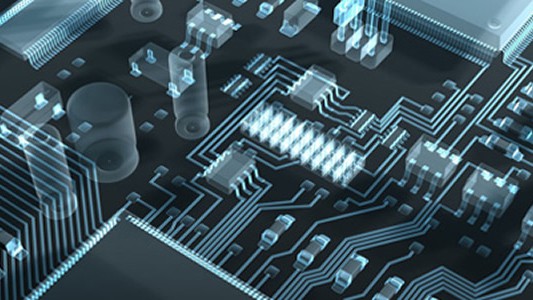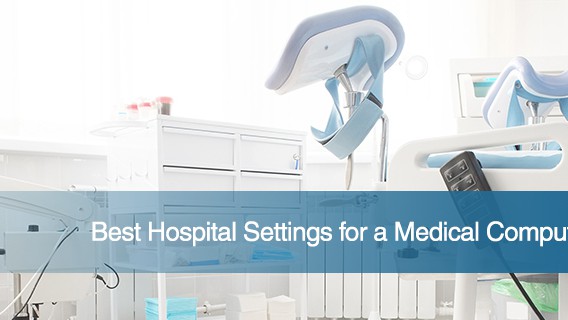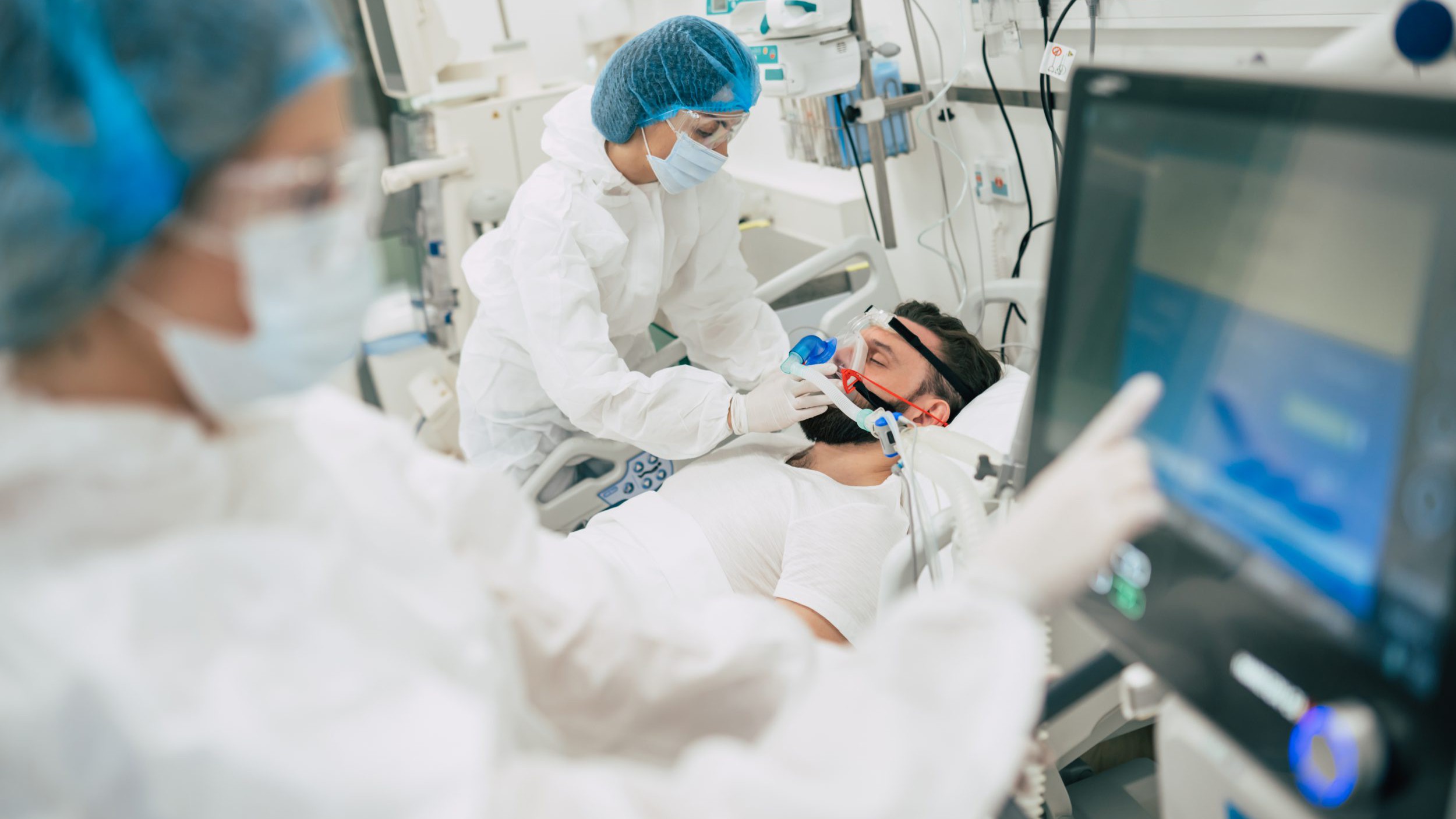Just a few years ago, hospitals and similar medical facilities lagged behind other industries when it came to effective use of computers. But government regulations such as HIPAA (Health Insurance Portability and Accountability Act) and Medicare/Medicaid information systems established an enhanced need for proper healthcare computer systems, while improved technology made such systems more affordable and easier to use.
Uses For Computers in a Medical Office or Hospital
Article Guide
Today, hospitals all over the country are taking advantage of dedicated systems to improve response time and focus more on patients. As time goes on, a quality medical computer is only going to become more and more vital to effective care. Here’s a look at 10 key areas where modern hospitals are using such systems to maximum advantage.
1.) EHR Software Runs Best on Compliant Medical Computers
According to the Office of the National Coordinator of Health Information Technology, over 75% of office-based clinicians and 96% of hospitals in the United States use an EHR system, which allows health files to be shared more readily and eliminates the need for cumbersome paper records. But simply implementing such a system isn’t enough.
Hospitals need medical-grade computers capable of running EHR software smoothly, as well as exhibiting features that allow staff to access the materials they need with a minimum of fuss. That includes components like display size, which allow the software to be run correctly, and single sign-on security measures to protect patient confidentiality.
It’s no small matter. A recent study by the Mayo clinic revealed that, in a survey of over 30,000 physicians, the average grade of their facilities’ EHR usability was a 45.9%. Those surveyed specifically mentioned the time it took to record notes onto their patient records was the primary contribution to their symptoms of burnout. The right medical computer allows EHR software to perform as intended, giving staff ready access to the information they need without causing frustration or compromising EHR security.
2.) Medical Cart Computers Make Rounds more Efficient
Medical carts, also known as workstations on wheels, allow hospital staff to move their computer from patient to patient and location to location as needed. It can be tempting to use powered carts, which provide battery life for computers, barcode scanners and similar equipment. They also allow for automated medication distribution, which lowers the chances of administering the wrong medication. But powered carts can also be expensive, and the additional weight can make them more difficult to maneuver through hospital corridors. They might be right for some situations, but budget-minded administrators often look for more cost-sensible solutions.
Medical cart computers with hot swappable batteries can operate with non-powered carts to create an efficient workstation on wheels. Hot swappable batteries that run low on power can be switched out for fresh batteries without having to shut the machine off, providing 24/7 up-time and allowing staff to use lighter non-powered carts without being tethered to a wall outlet.
3.) Mobile Charting with Medical Grade Tablets
Even with a lighter weight non-powered medical cart, sometimes wheeling a large device from room to room isn’t the best way for a healthcare practitioner to perform their rounds. In some cases, having a dedicated computer in every patient room isn’t a possibility for facilities with tighter budget constraints. Mobility and budget can both be two major hurdles that healthcare IT professionals must contend with.
Medical tablets provide a solution for both problems. A lot of hospitals are turning to these mobile medical devices as an alternative to medical carts. Nurses and physicians can walk into a patient room or exam room with a medical grade tablet and do their charting on the go. A medical tablet with a barcode scanner takes functionality to the next level, allowing the end user to scan patient ID bracelets, IV bags or other medication bottles to ensure that a patient is receiving the right medication.
4.) Improving Patient Safety in Operating Rooms
Any kind of equipment that enters the operating room needs to adhere to strict requirements. For example, the operating theater needs to be free of potential contamination, such as dust which can be spread by a computer’s cooling fan. Furthermore, electromagnetic signals, radiation and similar emissions can present a hazard to the patient, which rules out the wrong type of computer. For example, an anesthesiologist with a computer that isn’t medically certified may need to sit outside the operating room to monitor the patient, or else use paper records (and increase the risk of bookkeeping mistakes accordingly).
A fanless medical computer can address those problems quickly and effectively, utilizing advanced passive cooling technology to ensure the sterility of the space. IP65 certification ensures that the system can be cleaned and disinfected without damaging the components, while UL60601-1 certification allows the system to be used in close proximity to a patient with no danger. That makes for a smoother and more efficient operating room, and an attendant improvement to the quality of care.
5.) Increasing Patient Satisfaction and Engagement
Studies cited by the ONC stress the importance of patient engagement and how useful health IT can be in enhancing their overall satisfaction with the experience. No one wants to spend time in a hospital, and patients can easily be left feeling isolated and helpless just when they need energy and resolve. Cell phone use is often restricted – since noisy ringtones and MP3s can distract staff members from their work, and signals from the phone can disrupt important devices – which limits contact with family and friends.
Similarly, basic questions about the patient’s condition must sometimes wait all day until a doctor or nurse arrives on rounds, increasing anxiety and forcing the patient to wonder about comparatively simple questions. Depending on the circumstances, even basic functions like turning on a television may require a nurse or staff member, all of which can have a drastic effect on the patient’s emotional health and well-being.
Medical grade hospital computer systems, however, can provide a wealth of infotainment options, often from the same computer monitors that doctors and nurses use in the patient’s room. Patients can access information about their condition: putting their mind at ease and helping them better understand the treatment process. They can also access entertainment services like Netflix, and enjoy movies and television while they recuperate. Perhaps most importantly, built-in voice and video applications let them contact friends and family: putting them in touch with those best capable of providing emotional support.
6.) Custom Medical Device Manufacturing
The beauty of hospital computer systems is that, because they’re tailor-made for the medical field, they can be seamlessly implemented in all manner of custom-made medical devices. One of the greatest contributions a medical computer makes to a device manufacturer is its certifications. Being 60601-1 certified, these devices are tested and proven to be safe for near patient use, meaning they don’t emit electromagnetic interference that could hinder the operation of other life-sustaining medical devices in the room. This makes testing for FDA approval much less of a hassle for device manufacturers as this 60601-1 certification is required to be approved.
7.) Asset Management
Sanitation is everything in the healthcare setting. All it takes is one infected surface or surgical tool to infect a patient with a compromised immune system and cause complications. Fortunately, the right medical computer systems and tablets can be outfitted with RFID scanning tech that can transform the way a healthcare facility tackles costly hospital acquired infections.
Many healthcare facilities have taken a page out of manufacturing’s playbook and implemented asset tracking for their surgical tools and medical equipment. Using an RFID scanner, nurses and physicians can scan a medical tool into their system and indicate whether the tool has been sanitized or recently used. From there, the device can be scanned through every step of the sanitation process, ensuring there’s a traceable confirmation that a tool has been properly sanitized and is ready to be used on a patient. All a doctor or surgeon would need to do is scan the device before it’s used in order to confirm it’s been properly sanitized.
Asset management practices can even be used to track the availability of disposables such as face masks and sanitizing equipment. This can be immensely helpful in the case of an outbreak where stock of equipment such as face masks can be exhausted quickly. Using hospital computer systems with RFID asset tracking can ensure the proper decision maker is made aware of any shortages early enough to replenish their stock before they become an issue.
8.) Telemedicine Applications of Hospital Computer Systems
Medical computer carts have also been leveraged quite successfully to improve telemedicine efforts. Remote care doesn’t always take place outside of the medical facility. In cases where patients have highly contagious diseases, nurses and doctors need to be able to administer care from a safe distance. Using a medical computer outfitted onto a cart with remote control capabilities, staff can do just that. These carts can even be equipped with peripherals such as vital monitors and digital stethoscopes that can be operated remotely as well, meaning tests and diagnostics can be run even when staff isn’t present in the room with the patient.
Telehealth technology such as portable, handheld medical tablets can even have video chatting apps installed onto them, allowing doctors and patients to communicate “face-to-face” even when a patient’s condition would otherwise impact their ability to do so.
9.) Patient and Staff Scheduling
Hectic scheduling is the bane of both patients and healthcare staff. Unfortunately, with an industry as unpredictable as healthcare, certain levels of scheduling conflicts are par the course. That doesn’t mean, however, that medical computer systems can’t be leveraged to lighten the load.
Medical computers can be set up as terminals for patients as they enter the facility and wait for their appointments. Patients can enter the care facility, sign into the terminal computer, and immediately be placed in a queue for their appointment.
Staff can even use these medical computers, equipped with the proper scheduling applications, to optimize how their time is used as well. Using authentication hardware such as CAC readers or RFID scanners, staff can clock in and clock out seamlessly, alerting those who may need their help in real time of their arrival or departure. This means staff leaders always have a concrete idea of how many hands are on deck and who can afford to be deployed where.
10.) Augmented Reality
Augmented reality in healthcare hasn’t reached its full potential as of yet, but use cases have already begun to sprout across different healthcare systems. While some facilities have begun to use AR for interactive training of their staff, others have even begun using AR to assist first responders out in the field. Regardless, the prospective uses of augmented reality in healthcare have already garnered quite some attention and for good reason.
Naturally, medical computers and tablets have been the tools best equipped to meet this need for AR application.
Hospital Computer Systems Are For Both Patients and Staff
The ultimate goal of any piece of medical equipment is to help hospital staff perform their duties faster and more effectively. Hospital computer systems are tailor-built for the healthcare environments that they would be deployed in like with antimicrobial* properties to protect the computer casing from deterioration and degradation. Designed with that efficiency in mind, they provide a host of benefits for both staff and patients alike. For more information on how to put such technology to work for you, contact us here.
4 Ways That AI will Affect Medical Computer Systems
August 28, 2018
The term “artificial intelligence” conjures images straight out of science fiction blockbusters: super-smart machines controlling all aspects of life, and often running wild to destroy their human creators. In reality,…
0 Comments6 Minutes
Best Hospital Settings for a Medical Computer
September 24, 2015
The importance of using medical computers stems back to when former Secretary of Health and Human Services, Mike Leavitt, noted the importance of effective information technology in hospitals. Levitt, who served in the…
0 Comments5 Minutes
Medical Grade in Technology Explained
September 15, 2023
Is your hospital planning a major deployment of cutting-edge medical computers? At the forefront of your specifications is the requirement that they must be “medical grade.” But what exactly does…
0 Comments9 Minutes
You Can't
Learn from a Pop-up
But we can deliver knowledge to your inbox!
We dive deep in the industry looking for new trends, technology, news, and updates. We're happy to share them with you.
Knowledge, News, and Industry Updates Right in Your Inbox





